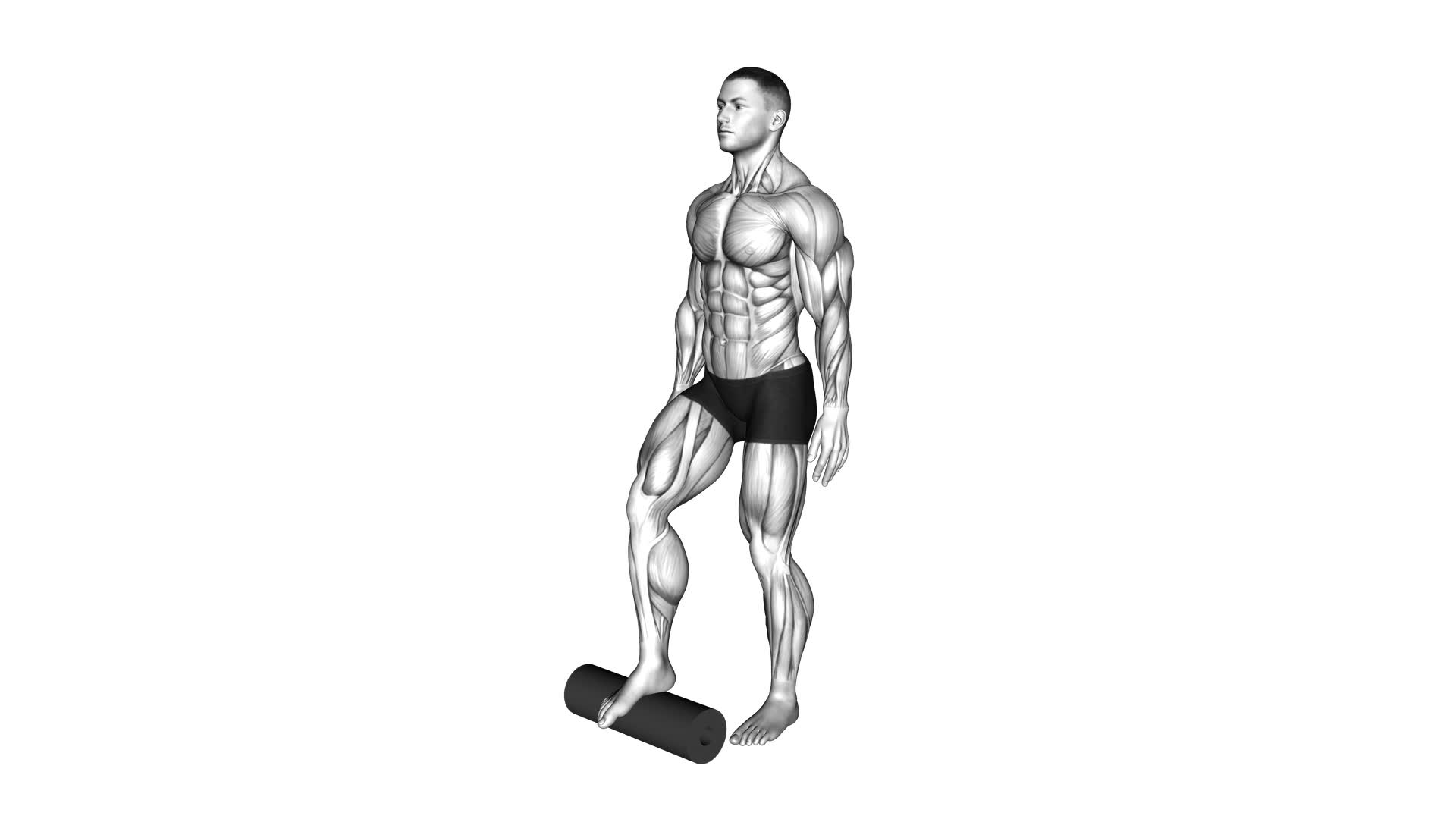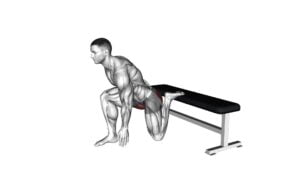Roll Foot – Video Exercise Guide & Tips

Are you looking for an effective way to relieve foot pain and improve your overall fitness? Look no further!
Watch This Exercise Video
In this video exercise guide, we will show you how to roll your foot using simple techniques and equipment. With our step-by-step instructions and helpful tips, you'll be able to incorporate foot rolling into your fitness routine in no time.
Get ready to give your feet the care they deserve and enhance your workout experience. Let's get started!
Key Takeaways
- Foot rolling exercises improve overall foot health.
- Proper technique and equipment are important for effective foot rolling.
- Advanced foot rolling exercises can target specific areas of the feet.
- Gradually increasing intensity and duration can provide greater benefits.
Benefits of Foot Rolling Exercises
By incorporating foot rolling exercises into your routine, you can experience a range of benefits that will improve your overall foot health.
One important aspect to keep in mind before starting foot rolling exercises is the importance of stretching. Before you begin rolling your feet, it's crucial to stretch your muscles and tendons to prevent any potential injuries. Stretching helps to increase flexibility, improve blood circulation, and prepare your feet for the rolling exercises.
During foot rolling, there are also some common mistakes that you should avoid. One common mistake is applying too much pressure on your feet. Remember, foot rolling exercises should be gentle and not cause any pain or discomfort. Another mistake to watch out for is rolling too quickly. It's important to take your time and roll slowly to allow your muscles and tissues to properly release tension and knots. Lastly, make sure to roll all areas of your feet, including the arches, heels, and balls of your feet, to ensure a comprehensive workout.
Essential Equipment for Foot Rolling
To properly execute foot rolling exercises, you'll need some essential equipment. One of the most important items you'll need is a foot roller. Foot rollers come in various shapes and sizes, each designed to target different areas of the foot. The most common types of foot rollers include wooden rollers, foam rollers, and spiky massage balls.
Wooden foot rollers are often made from solid wood and have a smooth surface. They provide a firm and deep massage, helping to relieve tension and improve circulation in the feet.
Foam rollers, on the other hand, are made from soft foam and offer a gentler massage. They're great for beginners or those with sensitive feet.
Spiky massage balls are another popular choice for foot rolling techniques. These balls have small, rounded spikes that stimulate the pressure points in your feet, providing an invigorating massage. They're particularly effective for targeting specific areas of discomfort or pain.
When choosing a foot roller, it's important to consider your personal preferences and needs. Experiment with different types to find the one that feels most comfortable and effective for you. Remember to always listen to your body and adjust the pressure and intensity of the foot rolling exercises accordingly.
Proper Technique for Foot Rolling
Start by placing the foot roller on the floor in front of you. This is the first step in mastering the proper technique for foot rolling. It's important to use the correct form to avoid common foot rolling mistakes. One common mistake is applying too much pressure on the roller, which can lead to pain or injury. Another mistake is rolling too quickly, which prevents the muscles from fully benefiting from the exercise.
To perform foot rolling correctly, begin by sitting on a chair or bench with your feet flat on the floor. Place the roller under one foot and gently apply pressure as you roll it forward and backward, from the heel to the toes. Make sure to cover the entire sole of your foot. You can also try rolling from side to side to target different areas.
There are different types of foot rollers available, including foam rollers, massage balls, and wooden rollers. Each type offers a unique sensation and targets different areas of the foot. It's important to choose a roller that suits your needs and preferences.
Advanced Foot Rolling Exercises
As you progress in your foot rolling journey, incorporating advanced exercises will further enhance the benefits for your foot health and mobility. These advanced foot rolling techniques are designed to target specific areas of your feet and provide a deeper release and stretch.
One advanced technique is the arch roll. To perform this exercise, place the ball of your foot on the roller and slowly roll from the ball to the heel, focusing on the arch area.
Another advanced technique is the toe stretch. Sit on a chair and place the roller under your foot. Lift your toes up and press them down onto the roller, stretching the muscles in your toes.
While performing these advanced exercises, it's important to be mindful of common mistakes that can hinder your progress. One mistake is applying too much pressure. Remember to start with light pressure and gradually increase as your muscles become more accustomed to the technique.
Another mistake is rolling too quickly. Take your time and move slowly to allow for a deeper release.
Incorporating these advanced foot rolling techniques into your fitness routine will help improve your foot health and mobility. By incorporating foot rolling exercises before and after your workouts, you can effectively warm up and cool down your feet, preventing injuries and promoting recovery.
Tips for Incorporating Foot Rolling Into Your Fitness Routine
To effectively incorporate foot rolling into your fitness routine, it's important to establish a consistent practice and gradually increase the intensity and duration of your foot rolling sessions. Foot rolling techniques can provide numerous benefits, such as improving flexibility, reducing muscle tension, and relieving foot pain.
Here are some tips to help you integrate foot rolling into your fitness routine successfully:
- Start Slow: Begin with a gentle rolling motion, using a tennis ball or a foam roller. Focus on the areas of your feet that feel tight or sore. Gradually increase the pressure and duration of your foot rolling sessions as your muscles become more accustomed to the technique.
- Be Mindful of Your Technique: Pay attention to the alignment of your feet and the pressure you apply while rolling. Avoid putting excessive pressure on the bones or joints and instead target the muscles and connective tissues. Use controlled movements and listen to your body to avoid any discomfort or pain.
- Avoid Common Mistakes: One common mistake in foot rolling is rolling too quickly, which can reduce the effectiveness of the technique. Take your time, allowing the pressure to penetrate deeply into the muscles. Additionally, make sure to hydrate before and after your foot rolling sessions to prevent dehydration and promote muscle recovery.
Frequently Asked Questions
Can Foot Rolling Exercises Help Improve Balance and Stability?
Yes, foot rolling exercises can help improve your balance and stability.
By incorporating foot rolling techniques into your workout routine, you can strengthen the muscles in your feet and ankles, which are essential for maintaining balance.
This can also improve proprioception, the ability to sense the position of your body in space.
The benefits of foot rolling exercises extend beyond balance and stability, as they can also help relieve foot pain and improve overall foot health.
Are There Any Precautions or Contraindications for Foot Rolling Exercises?
When it comes to foot rolling exercises, it's important to be aware of any precautions or contraindications.
Before starting any exercise program, it's a good idea to consult with a healthcare professional, especially if you have any pre-existing foot conditions or injuries. They can provide guidance on whether foot rolling exercises are safe and appropriate for you.
Additionally, it's important to listen to your body and stop any exercise that causes pain or discomfort.
How Often Should Foot Rolling Exercises Be Performed for Optimal Results?
For optimal results, it's important to consider the foot rolling frequency. Regularly performing foot rolling exercises can yield benefits such as improved circulation, flexibility, and reduced foot pain. By incorporating foot rolling into your routine, you can enhance your overall foot health.
However, it's essential to listen to your body and avoid overdoing it. Consulting with a healthcare professional or a fitness expert can provide personalized guidance on how often you should be performing these exercises.
Can Foot Rolling Exercises Help Alleviate Plantar Fasciitis or Other Foot Conditions?
Foot rolling exercises, such as rolling a tennis ball under your foot, are effective in alleviating plantar fasciitis and other foot conditions. By applying pressure and massaging the foot, these exercises can help reduce pain, inflammation, and improve flexibility.
The benefits of foot rolling exercises include increased blood flow, loosening tight muscles, and promoting overall foot health. Incorporating these exercises into your daily routine can provide relief and prevent future foot problems.
Are There Any Specific Warm-Up or Cool-Down Exercises Recommended Before and After Foot Rolling Sessions?
Before and after your foot rolling sessions, it's important to include specific warm-up and cool-down exercises.
These exercises help prepare your muscles and joints for the activity and prevent any potential injuries. Warm-up exercises can include jogging in place, ankle rolls, and toe stretches.
After your session, cool-down exercises like calf stretches and foot massages can help relax your muscles and prevent any post-exercise soreness.
Incorporating these exercises into your routine will enhance the effectiveness of your foot rolling sessions.
Conclusion
Incorporating foot rolling exercises into your fitness routine can provide numerous benefits. These include improved flexibility, reduced muscle soreness, and increased blood circulation. To perform these exercises effectively, you'll need a foot roller or a tennis ball.
By applying pressure and rolling your foot over the roller, you can release tension and promote relaxation. Remember to start with basic techniques and gradually advance to more challenging exercises for optimal results.
Make foot rolling a regular part of your fitness regimen for happy and healthy feet.

Author
Years ago, the spark of my life’s passion ignited in my mind the moment I stepped into the local gym for the first time. The inaugural bead of perspiration, the initial endeavor, the very first surge of endorphins, and a sense of pride that washed over me post-workout marked the beginning of my deep-seated interest in strength sports, fitness, and sports nutrition. This very curiosity blossomed rapidly into a profound fascination, propelling me to earn a Master’s degree in Physical Education from the Academy of Physical Education in Krakow, followed by a Sports Manager diploma from the Jagiellonian University. My journey of growth led me to gain more specialized qualifications, such as being a certified personal trainer with a focus on sports dietetics, a lifeguard, and an instructor for wellness and corrective gymnastics. Theoretical knowledge paired seamlessly with practical experience, reinforcing my belief that the transformation of individuals under my guidance was also a reflection of my personal growth. This belief holds true even today. Each day, I strive to push the boundaries and explore new realms. These realms gently elevate me to greater heights. The unique combination of passion for my field and the continuous quest for growth fuels my drive to break new ground.



